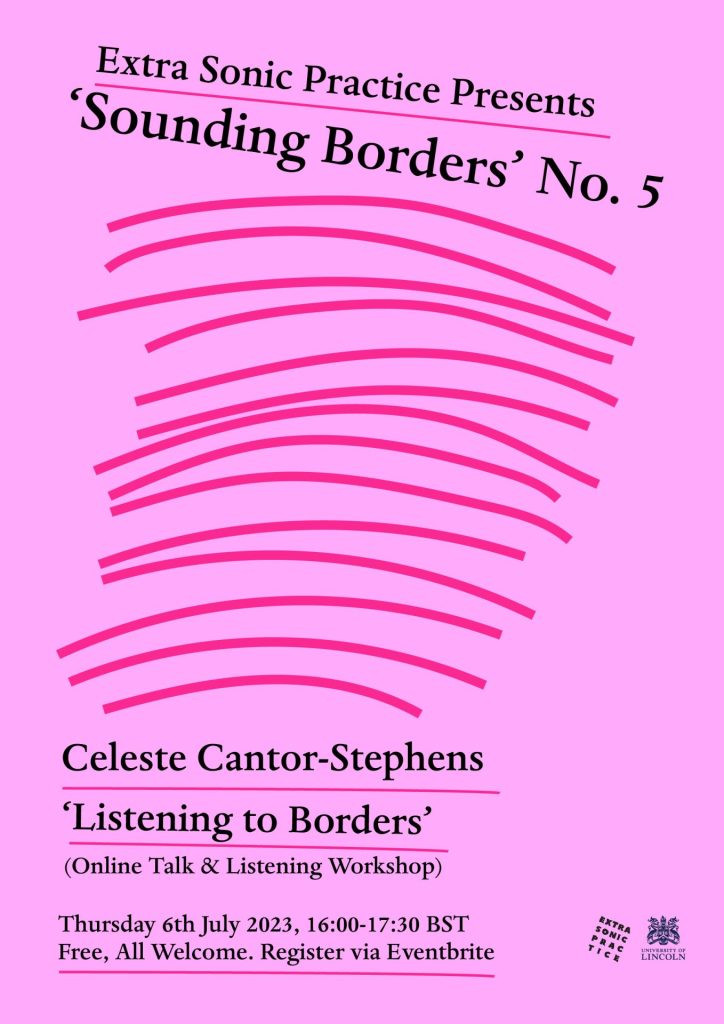
National borders are ambiguous and complex. While often depicted as simple lines on a map, passing places, or organically occurring boundaries, borders can, conversely, be understood as malleable constructions by (and of) the state, as spaces that extend far beyond the boundaries of a country, and as places where rights and regulations disappear. For some people, borders can appear inescapable, no matter where they stand. The sounds from within and around these border spaces are often revealing, emotive, touching and informative, offering human-led insight into exceptionally challenging experiences: from music made in refugee camps, to the sounds of community, from the observations and thoughts of local residents and volunteers, to testimonies and lived stories of migration.
This conversation and listening session explores the ideas around borders and sound, including extracts from a new sonic work-in-progress. The piece incorporates field recordings from makeshift refugee camps and other border spaces, interview extracts, music, and further composed and found sounds. With the imminent opening of an accommodation centre for up to 2,000 asylum seekers at Lincolnshire military site RAF Scampton, the work also connects the wider border regime and events to the local region, and invites contributions and reflections from the Lincolnshire community.
Attendees to this session will also have the opportunity to contribute to the piece with their own voices, ideas and experiences of borders, movement, place and home. To register your free ticket, visit: https://www.eventbrite.co.uk/e/sounding-borders-no-5-listening-to-borders-tickets-667453911617?aff=oddtdtcreator
Celeste Cantor-Stephens is a musician, sound artist, writer and activist. Situated at an intersection of art and social justice, her current work explores experiences of displacement and borders, and the place of sound and music within this, This develops upon an MSt, an MPhil, and a period of creative development and research, supported by Arts Council England. Much of her work draws upon extensive research and active engagement at the Franco-British border.
